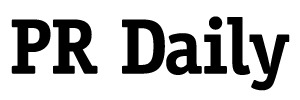The Scoop: How Kraft Heinz is positioning move away from synthetic dyes
Plus: Trump admin extends deadline for TikTok to find new owner; Social series gains traction with smart and fun 60-second takeaways.

Kraft Heinz released a statement on Tuesday saying they would eliminate Red 40 and other unnatural colors from their products by 2027.
As part of its “Make America Healthy Again” agenda, the Trump administration has condemned the use of several synthetic dyes for alleged health-related issues, despite being deemed safe by federal regulators for decades, putting pressure on companies to address the issue.
The Wall Street Journal reports that the Pennsylvania-based ketchup company stated this week: “The vast majority of our products use natural or no colors, and we’ve been on a journey to reduce our use of (Federal Food, Drug and Cosmetic Act) colors across the remainder of our portfolio.”
Kraft Heinz further added that 90% of their products do not contain synthetic dyes and that they eliminated artificial colors in their mac and cheese nearly a decade ago.
Products that currently use synthetic dyes include Jell-O, Jet-Puffed, Crystal Light and Heinz Relish.
“For most products, Kraft Heinz said it can replace artificial colors with natural ones,” according to the article. “With existing colors harder to re-create naturally, like greens and blues, the company said it would replace those with other colors. In products where color isn’t critical, Kraft Heinz will remove them entirely.”
Why it matters: As one of the most recognizable brands in the U.S., it’s important that Kraft Heinz got out in front of this concern and showed how it is paying attention to evolving consumer behavior.
The brand also took the opportunity to reiterate that the majority of its products are dye-free, therefore affirming that Kraft Heinz prioritizes quality.
Further, Kraft Heinz potentially averted a crisis by getting their message out early and with clarity.
While the organization works to remove dyes over the next year and a half, what matters is that they addressed the issue head-on, with a plan that spoke to both governmental and consumer concern.
Editor’s Top Reads:
- The Trump administration announced this week that TikTok will receive a second 90-day extension to continue its search for American owners in order to keep operating in the U.S., according to The New York Times. From the article: “The repeated extensions have raised concerns among a handful of lawmakers, who have urged Mr. Trump to clarify his plans for TikTok or force it to stop operating in the United States.” White House Press Secretary Karoline Leavitt told reporters that Trump “does not want TikTok to go dark.” The messaging here is leaving people confused. By not heeding deadlines, businesses are left wondering what the fate of TikTok is and whether the administration has a game plan should no American investors step up. The wishy-washy approach leaves an unsettled, tumultuous feeling for those who rely on TikTok for revenue. In order to plan accordingly, businesses need a decisive plan so they can strategize accordingly. Credibility is lost when the messaging is murky.
- Two young advertising experts have taken their social media series “60 Seconds of Ad News” on a viral adventure. Geno Schellenberger and Jack Westerkamp, both 27, are giving agency executives the quick round-up they need on busy weekday mornings with their daily takeaways of advertising headlines. The videos are casual, unfiltered and often feature a white board as the guys time themselves giving their best interpretations of what transpired in the past 24 hours of ad news. There are usually overlays of images and music to add some drama to the videos. The micro content offers the highlights of the day in quick, relevant bursts that fit into the schedules of busy executives. They’re paying attention to their audience’s short attention span, yet offering it in a way that’s useful, humorous and smart. By releasing the series on LinkedIn as well as Instagram, they’re targeting viewers who work in advertising, along with industry professionals.
- Pope Leo addressed AI this week while speaking to cardinals about tech advancement and how to weigh potential risk and uphold human value. Pope Leo said: “Today, the church offers its trove of social teaching to respond to another industrial revolution and to innovations in the field of artificial intelligence that pose challenges to human dignity, justice and labor.” In keeping with his first public address to the world, Pope Leo is showing through his statement that he’s aligned with goals to keep humanity front and center, even through the advancement of technology. In his initial address, he focused on the importance of the ordinary person and the everyday worker. Pope Leo isn’t sloughing AI off as something to ignore but rather starting a conversation about its implications and how it can work with his current goals. By addressing the issue, he’s opening the door for input and conversation in a way that says he will consider how to move forward successfully for everyone. Yes, it is only one month into his tenure as the leader of the Catholic Church, yet Leo is affirming his stance on humanity and staying true to his initial public statement. Continuity and clarity are important messaging tools that let people know where you stand.
Courtney Blackann is a communications reporter. Connect with her on LinkedIn or email her at courtneyb@ragan.com.







